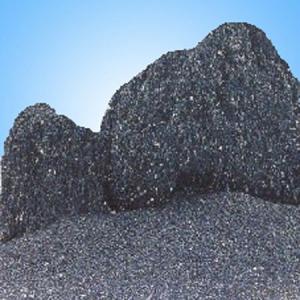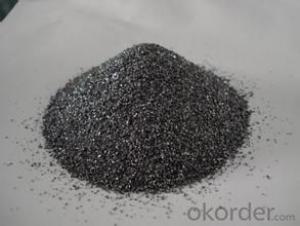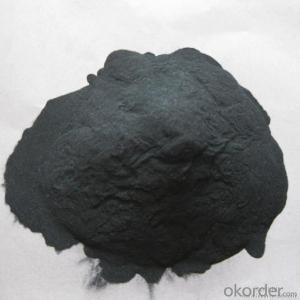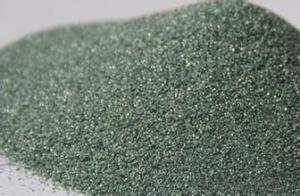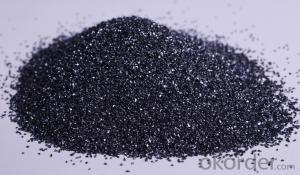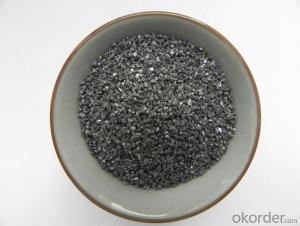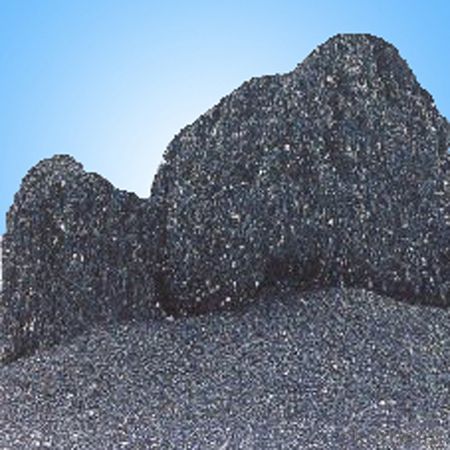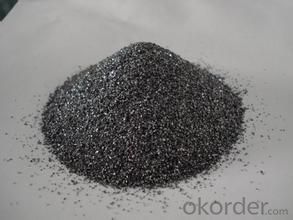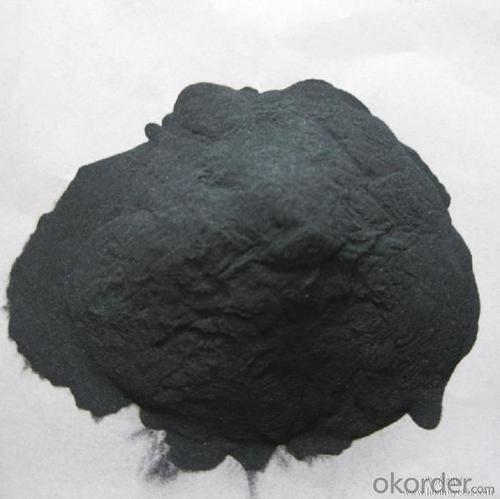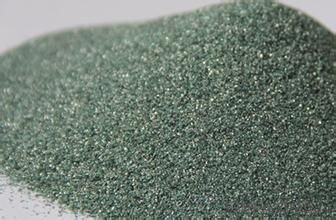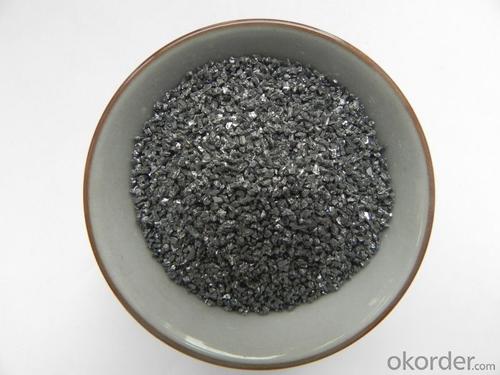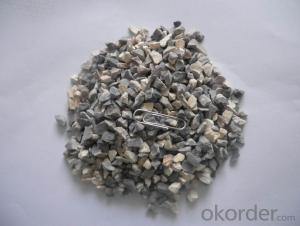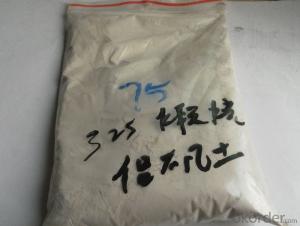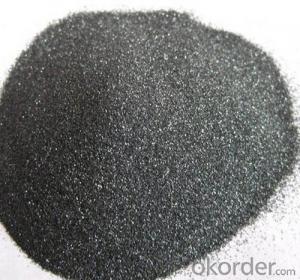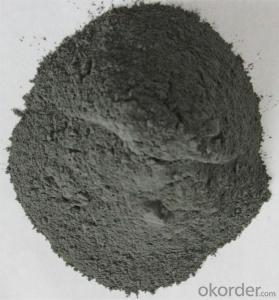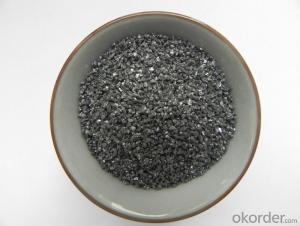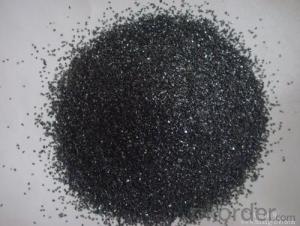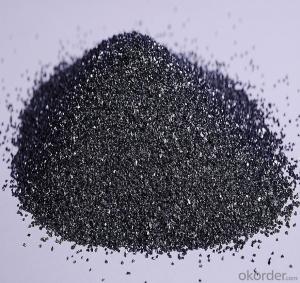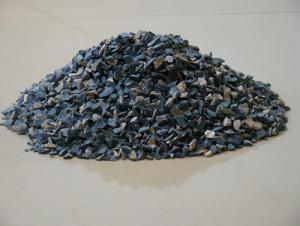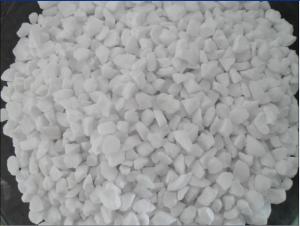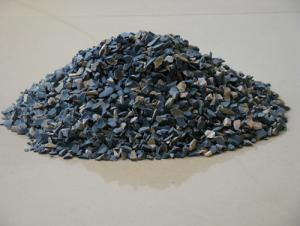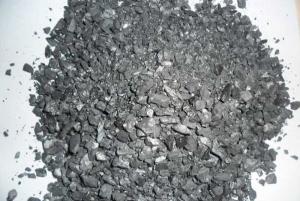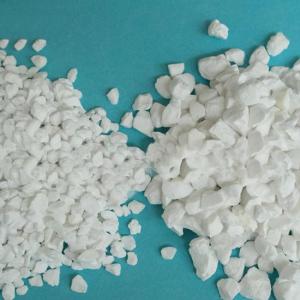Silicon Carbide (SiC) Raw Materials for Refractory Applications at Competitive Prices
- Loading Port:
- Tianjin
- Payment Terms:
- TT or LC
- Min Order Qty:
- 25 m.t.
- Supply Capability:
- 3000 m.t./month
OKorder Service Pledge
OKorder Financial Service
You Might Also Like
Silicon Carbide/SiC/Competitive Price of Silicon Carbide
1.Structure of CNBM'S Silicon Carbide Description
Black Silicon Carbide is produced with high temperature in a electric resistant furnace from a mixture of quartz sand and petroleum coke.
Black silicon carbide is typically used for working on cast iron ,non-ferrous metals, stone, leather, rubber, and other materials which requires sharp cutting characteristics. The mineral is also used widely as a refractory material and metallurgical additive.
2.Main Features of CNBM'S Silicon Carbide
Its hardness is between that of fused alumina and synthetic diamond and mechancial intensity of it is also greater than that of fused alumina. It is brittle and very sharp and has a certain degree of electrical and heat conductivity.
3.Main usage of CNBM'S Silicon Carbide
1-Grinding non-ferrous materials, rock, stone, leather, rubber, finishing tough and hard materials
2-Bonded abrasive tools, lapping and polishing
3-Widely used as a metallurgical additive and refractory material
4-Refractory
4. CNBM'S Silicon Carbide Images
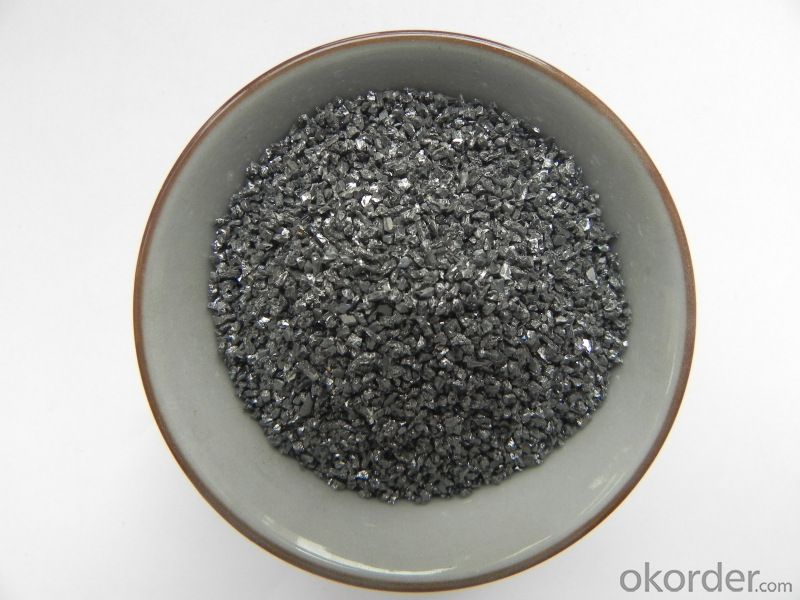
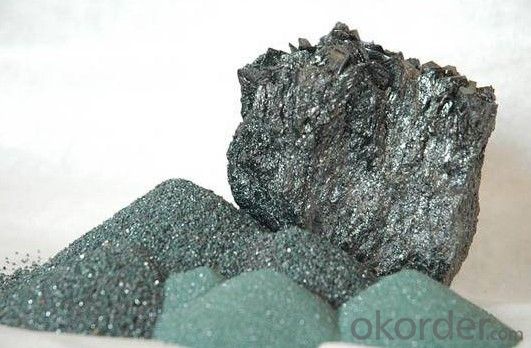
5. Calcined Bauxite Specification
Grit Size | SiC | FC | Fe2O3 |
F12-F90 | 98.50 | <0.20 | 0.60 |
F100-F150 | 98.50 | <0.30 | 0.80 |
F180-F220 | 97.00 | <0.30 | 1.20 |
F230-F400 | 96.00 | <0.40 | 1.20 |
F500-F800 | 95.00 | <0.40 | 1.20 |
F1000-F1200 | 93.00 | <0.50 | 1.20 |
P12-P90 | 98.50 | <0.20 | 0.60 |
P100-P150 | 98.00 | <0.30 | 0.80 |
P180-P220 | 97.00 | <0.30 | 1.20 |
P230-P500 | 96.00 | <0.40 | 1.20 |
P600-P1500 | 95.00 | <0.40 | 1.20 |
P2000-P2500 | 93.00 | <0.50 | 1.20 |
6.FAQ of Calcined Bauxite
1). Q: Are you a factory or trading company?
A: We are a factory.
2). Q: Where is your factory located? How can I visit there?
A: Our factory is located in Ningxia, China. You are warmly welcomed to visit us!
3). Q: How can I get some samples?
A: Please contact me for samples
- Q: Which refractory quality inspection authority is good?
- Of course, it is Research Institue of Refractory Materials in Luoyang, Henan. In fact, what we want is accuracy and authority. Quality and inspection costs, which is more important?
- Q: Does anyone know which materials belong to light fire resistant material?
- Fire partitions can be divided into organic and inorganic fire partitions, the main ingredient of organic fire partitions is organic material, which can be used for cable tray with corrosion-resistant and fire protection requirements, and the main ingredient of inorganic fire partitions is inorganic material, mainly used for fire protection. As the main component is inorganic material, it can not be use in projects with acid-resistant and alkali-resistant requirements. Of course, the price of the same amount of organic fire partitions is generally more expensive than that of the inorganic fire partitions . The fire endurance of these two products of general enterprises are 3 hours.
- Q: How is the fire endurance of the fireproof paint?
- fire endurance of fireproof paint is from 1 to 4 hours. Mechanism: Fireproof paint itself is flame-retardant or non-combustible, protecting the substrate from direct contact with the air,delaying the time for catching fire and reducing the burning speed. fireproof paint decomposes with heat and releases non-combustible inert gas, thining out the flammable gas produced by the protected object, making it difficult to burn or slow down the burning. expansive fireproof paint expands under heat and forms a layer of carbon foam insulation to cover the protected object, delay the heat transfer in the substrate , prevent burning and possible losing of fireproof abilitiy because rising temperature.
- Q: What's the difference of fire-resistant material's density, specific gravity and bulk specific gravity?
- It usually used to test lightweight refractory. Density can be divided into apparent density (usually called as density) and true density: apparent density includes blow hole inside the sample; Unit weight is using quality to divide volume of sample and specific weight is used to represent liquid.
- Q: What is the type of heat resistance property of high temperature electric furnace ?
- According to the levels of refractoriness : Common refractories: & Gt: 1580 ℃ ~ 1770 ℃ advanced refractories: 1770 ℃ ~ 2000 ℃ AAA refractories; 2000 ℃
- Q: What kind of refractory bricks material is best?
- 1, high alumina brick: The content of Al2O3 is more than 75. The refractoriness is higher than the clay brick. It has good resistance to acid, alkali and erosion and is suitable for cement kiln calcining zone and other places. It has long operation life, but the price is high. 2. dolomite?brick: Formation of coating has good performance, good corrosion resistance, but f-CaO is contained in bricks. It is hydratable and difficult to transport and keep, so it is less used in the production. 3. magnesia-chrome bricks: It has good formation of coating and is used for burning zone. The disadvantage is poor thermal shock resistant performance. Besides, positive Hexavalent Cr is highly toxic. Countries that produce and use magnesia-chrome bricks gradually decrease on the international. Now production units using this brick should find alternatives as soon as possible. 4. spinel brick: It is often used in transitional zone and has good seismic performance, good reduction resistance, but refractoriness is a little bit poor. 5. anti-stripping brick: This brick contains a small amount of ZrO. Martensite phase transformation happens to form thin crack during temperature-rise period. It has strong alkali?resistance, anti-stripping performance and good slag resistance. 6. phosphate brick: It has low refractoriness, but it has strong strength and good shock resistance. It is often used in grate?cooler, hot kiln hood, etc. 7. carborundum brick: It has high temperature resistance(1800 degree, softening temperature under a fixed load is 1620-1640), small coefficient of thermal expansion, high cold-resistance heat-resistance, abrasion resistance. It is suitable for cooling zone and kilneye. 8. silmo brick: It has good thermal shock resistance, high strength, good abrasion resistance, and is suitable for transitional belt.
- Q: What are the types of advanced refractory?
- According to the chemical composition of minerals,refractory can be divided into eight categories: 1, siliceous material. 2, aluminosilicate materials. 3, magnesia materials. 4, dolomite materials. 5, chromium materials. 6, the carbonaceous material. 7, zirconium materials. 8, special refractories. 1. refractories according to chemical properties can be divided into three categories: 1, acidic refractory materials. 2, neutral refractories. 3, basic refractories. 1. refractories according to chemical properties can be divided into three categories: 1, ordinary refractories, refractoriness is 1580-1770 degrees. 2, advanced refractories refractoriness is 1770-2000 degrees. 3, super refractories refractoriness higher than 2000 degrees. 3. refractory according to the forming process can be classified into seven categories: 1, natural rock molding process. 2, compression moulding refractories. 3, moulding refractories by casting. 4, plastic molding refractories. 5, ramming molding refractories. 6, injection molding refractories. 7, extrusion molding refractories.
- Q: What's the fire resistance rating of the exterior fire?retardant?coating?
- First of all, fire retardant coating has no class distinctions. Buildings fire resistance rating is generally classified as follows: I grade fire resistance, II grade fire resistance, III grade fire resistance, IIII grade fire resistance. Buildings with I grade and II grade fire resistance are much common. According to the coating thickness, exterior fire-resistant coating for steel structure can be classified as follows: 1. Exterior thin fire-resistant coating for steel structure, 2. Exterior ultra-thin fire-resistant coating for steel structure, 3. Exterior thick fire-resistant coating for steel structure.
- Q: What is the the best ratio of mortar in refractory cement?
- Specifical proportions are as following: 42.5R cement is 425 rapid hardening cement. Using the 425 cement to compound the mortar. The reducion of cement will naturally impact the workability of the mortar. The mix design standard of the mortar specifies the minimum amount of cement is not less than 200kg / m3. If it is composite mortar, and the strength and workability can be ensured, it is Ok to use 425 to compound. You can look for instructions of mixing proportion of mortar online as a reference.
Send your message to us
Silicon Carbide (SiC) Raw Materials for Refractory Applications at Competitive Prices
- Loading Port:
- Tianjin
- Payment Terms:
- TT or LC
- Min Order Qty:
- 25 m.t.
- Supply Capability:
- 3000 m.t./month
OKorder Service Pledge
OKorder Financial Service
Similar products
Hot products
Hot Searches
Related keywords
